Hidden onsen hot spring near Tokyo is waiting to be discovered by foreign tourists
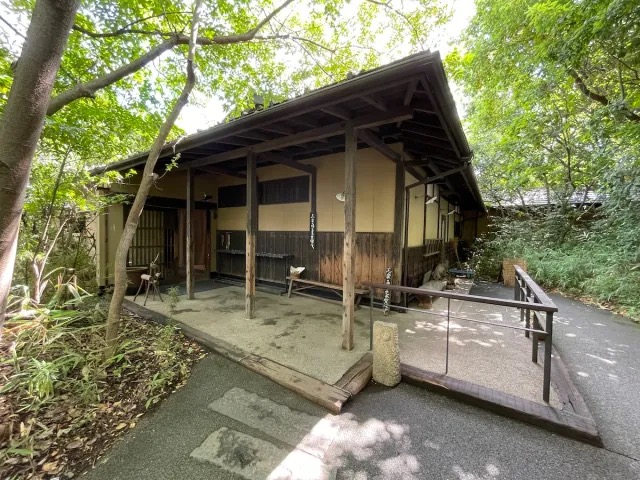
A secret gem you won’t find in travel guides.
There are lots of hidden hot springs in Japan that get write-ups in travel guides, leading them to become not-so-secret in the end as tourists descend upon them. However, here at SoraNews24, we’re all about revealing the true gems that are often only known by locals, and today we have one that’s not only beautiful but also an affordable place to stay.
Called Jomon Natural Hot Spring Shiraku no Yu, this facility is located in Kawasaki City in Tokyo’s neighbouring Kanagawa Prefecture, and it’s just 30-40 minutes by train from Tokyo Station.
▼ The easiest way to get there is to get off at Yako Station, two stations past JR Kawasaki Station, and from there it’s a six-minute walk.
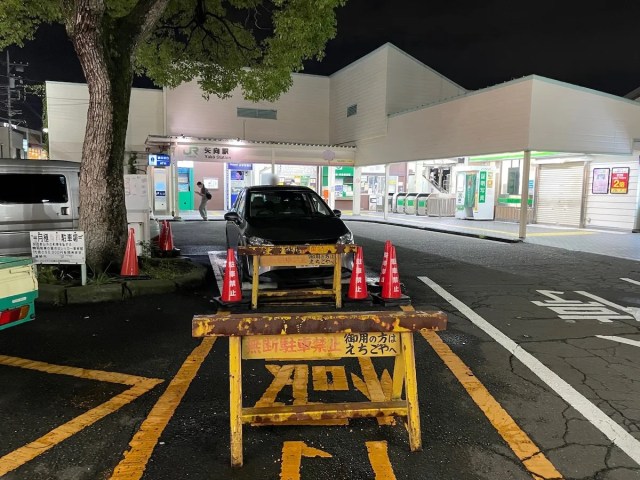
The area in front of the station is quite lively with restaurants, supermarkets and drug stores, but after a short walk, the scenery transforms into a quiet residential neighbourhood. Then, a forest of trees suddenly comes into view, with the entrance to the accommodation facility glowing faintly in the distance, inviting you to step into a different world.
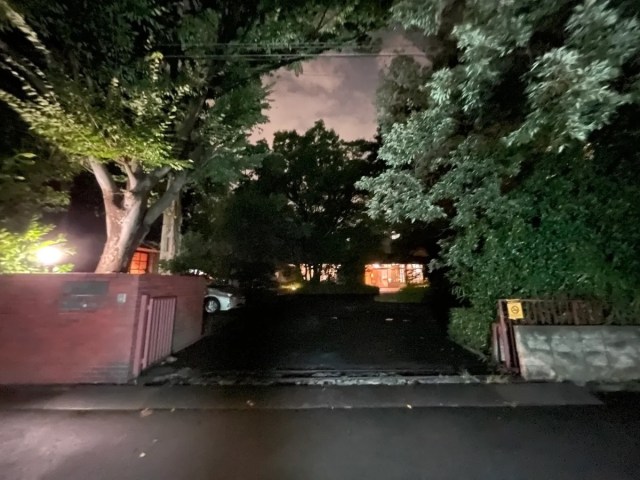
This is the Kawasaki Lifelong Training Centre, a facility that accommodates guests for overnight training courses, seminars, meetings, social gatherings…and regular overnight stays.

The Shiraku no Yu hot spring is attached to this facility so guests have unlimited access to it during opening hours throughout their stay. First, though, you have to check in at reception and pay the accommodation fee, which is priced from 5,850 yen (US$39.88) per night.
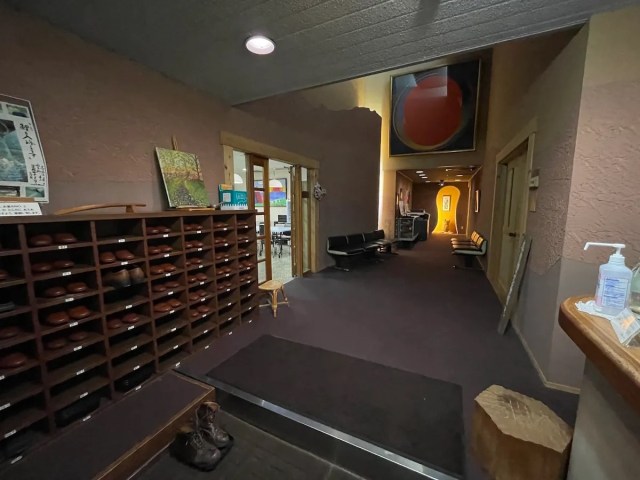
The high ceilings and art on the walls make it feel like a museum, although when we arrived after 10:30 p.m. it was more like something out of Night at The Museum.
▼ At this time of night there was nobody around, so in the dining hall…
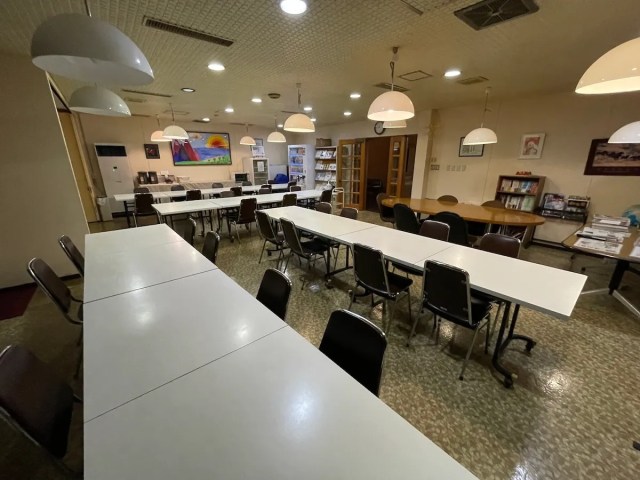
▼…we could make ourselves a cup of tea without anyone watching.
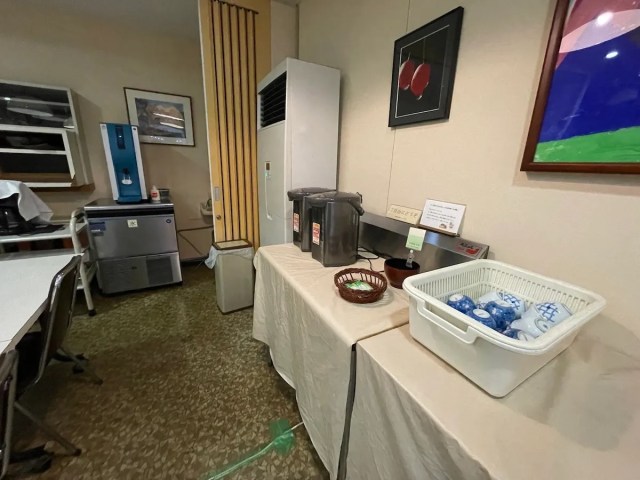
According to staff, the hot springs are open until 11:30 p.m., so we made a point to remember their location as we made our way to our room.
▼ 温泉 (“onsen” or “hot spring”) to the left, 客室 (“kyakushitsu” or “guest rooms”) to the right.
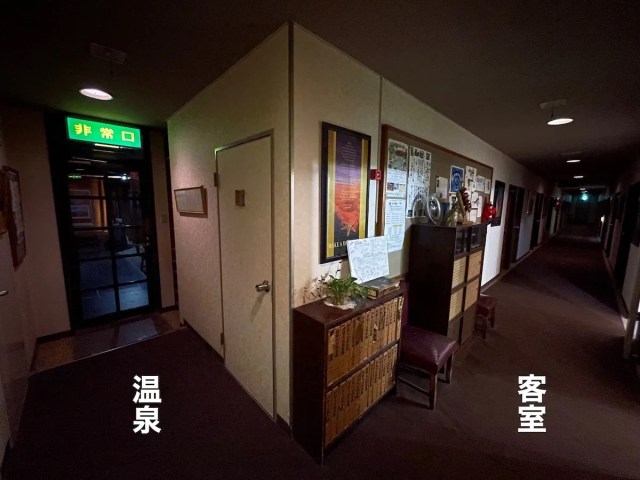
The hall leading to our room was lined with paintings, and though there were many doors here, there was no mistaking ours, because…
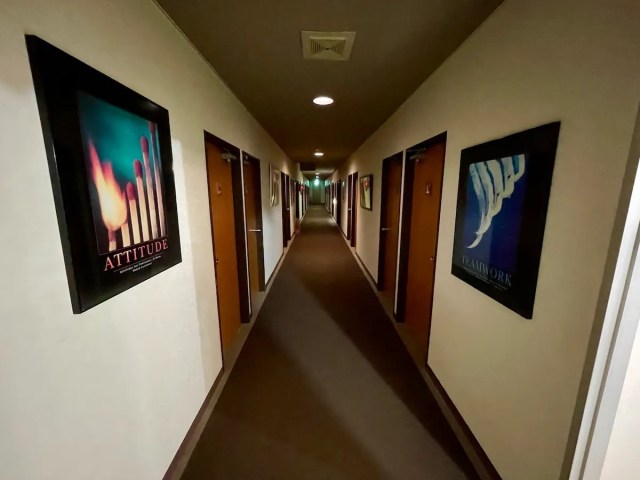
▼ …it was wide open, awaiting our arrival.
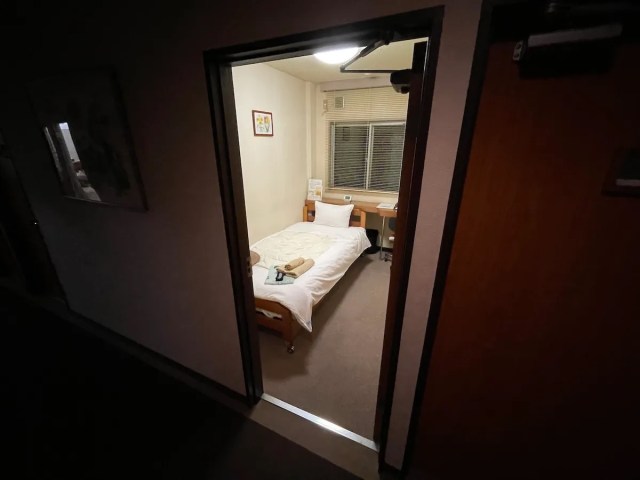
▼ The room was small, but it had everything we needed for a comfortable stay.
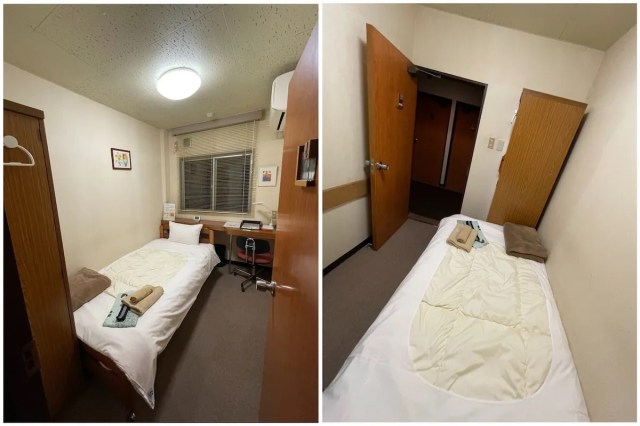
While there are no toothbrushes provided (so you’ll need to bring one or purchase one from reception) there was a yukata and a set of two towels on the bed, so after changing into the comfy outfit, it was time to head out to the hot spring…and get a little lost along the way.
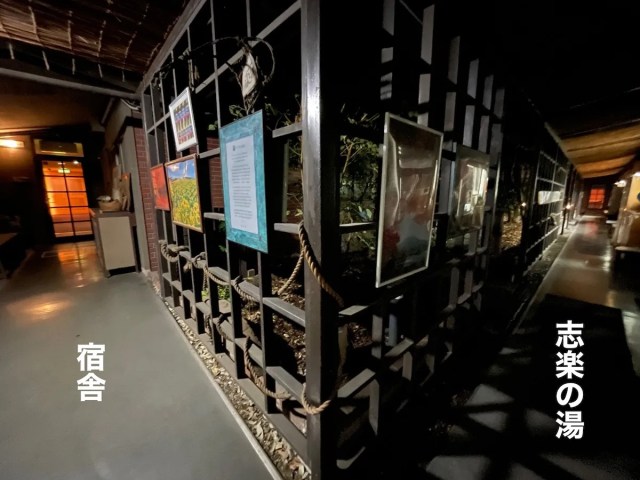
By day, we wouldn’t think twice about wandering through the building like this, but at night it was honestly scary. Not only were the lights at a bare minimum as an energy-saving measure, but there were insects hopping along the hall, paintings that looked like they were about to spring to life, and even toy dogs on a bench.
▼ It was so eerie we felt as if we’d been whisked away to an unknown world far away from the big city.
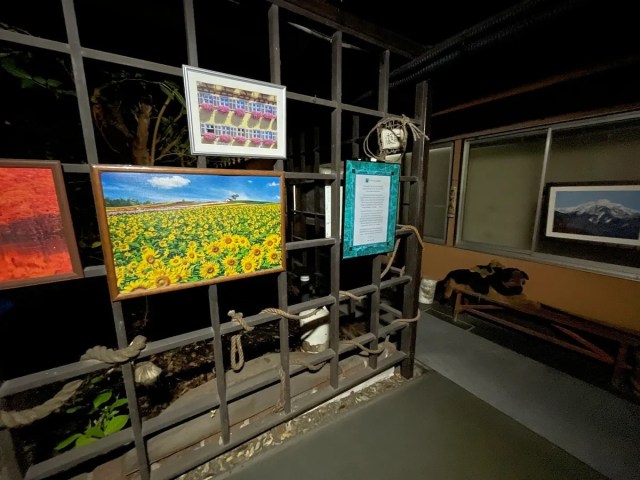
After passing through the quiet L-shaped corridor, we arrived at a slipper storage area, which made us think the hot spring must be just beyond this point.
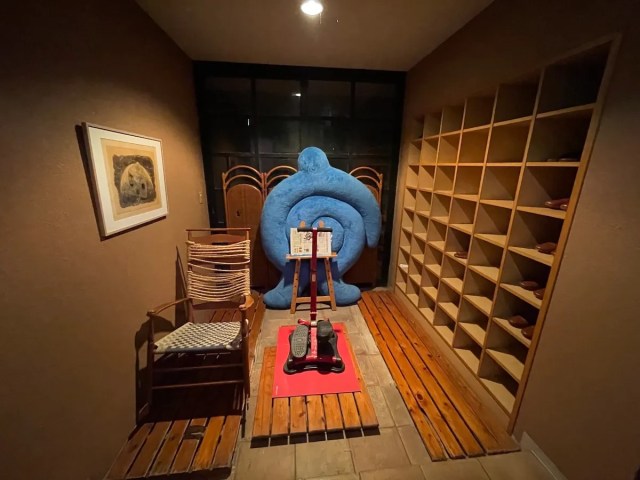
However, the next spot turned out to be a large lounge area, with comfy chairs and loads of paraphernalia bringing to life the Jomon period (c. 14,000-300 BC), from which the hot spring takes its name.
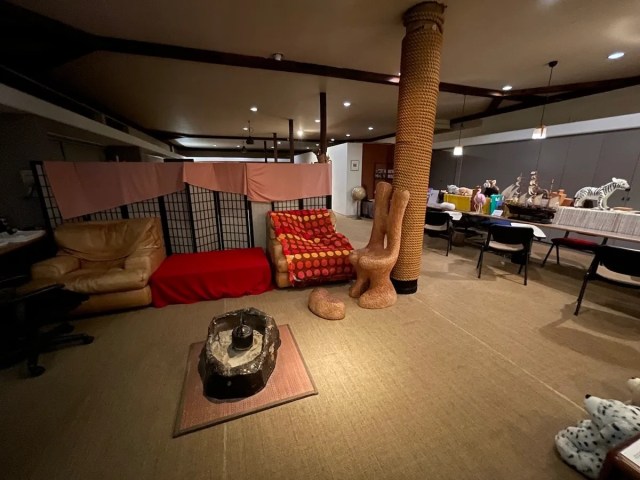
▼ This area also had the feel of a museum, with the commitment to art being truly impressive.
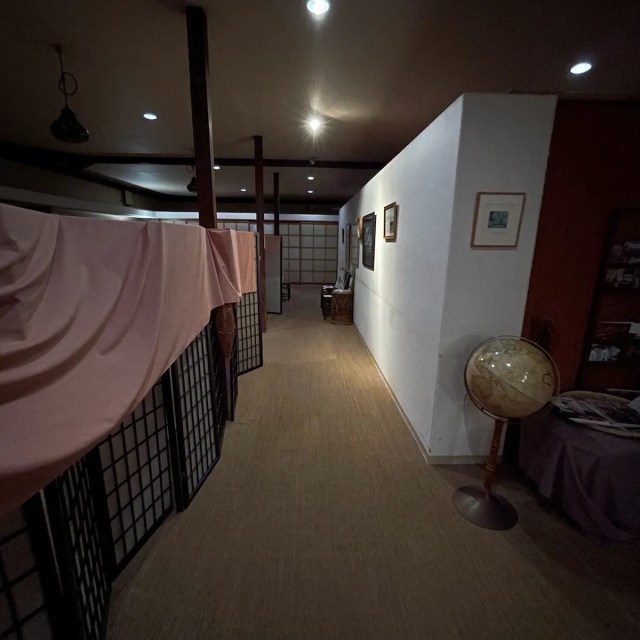
As it was late at night, one section had been curtained off and it looked like it was leading to a dead end, but as we got closer to the sliding door in the distance we could see…
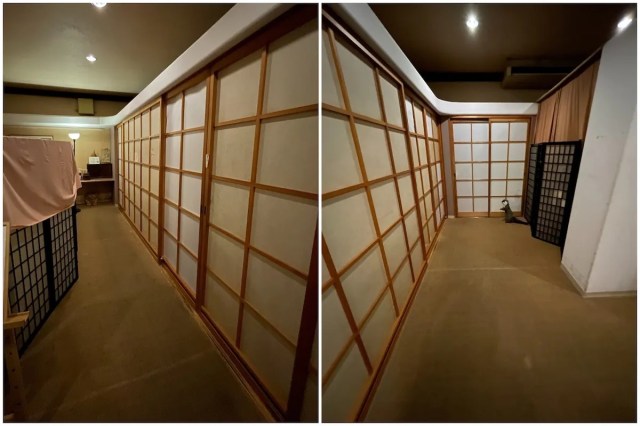
▼ …an otter?
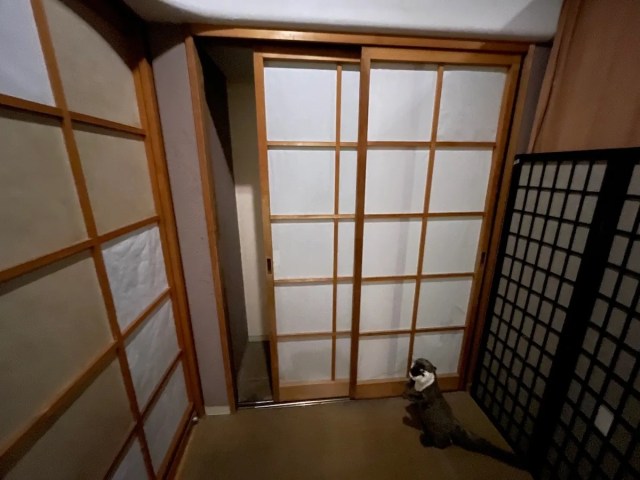
This looked like a door to a hidden entrance, and with the otter seemingly waving us forward to check it out, we stepped through to find a beautiful passageway.
▼ The floorboards creaked underfoot, adding to the eerie atmosphere.
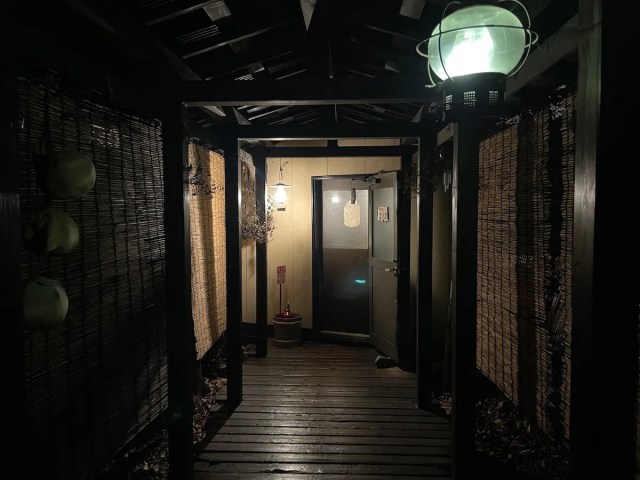
Stepping through the next door took us into the main floor of the building, which, with its brightly lit shops, rest areas and snack corners, had a much more inviting atmosphere.

However, there was still a way to go to get to the hot spring, with the route taking us out of the building yet again.
▼ This time, the outside hallway was wide, solidly built and easy to walk through, giving us a glimpse into the courtyard that added an air of elegance.
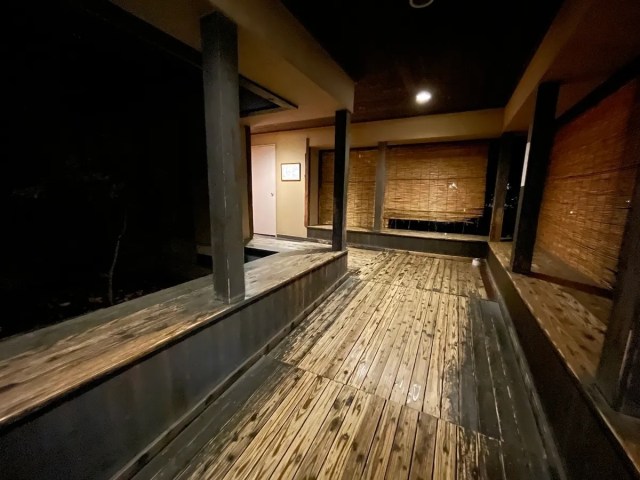
After enjoying the night breeze, this hallway leads into the hot spring, where more Jomon-related objet d’art are ready to greet you.
▼ Women’s bath on the left, men’s on the right.
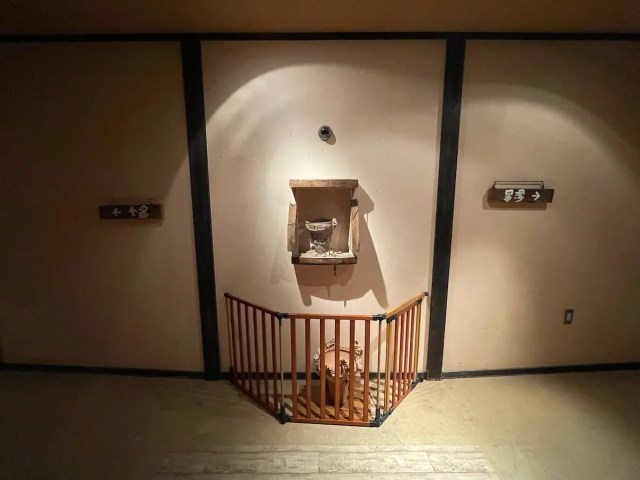
The lockers in the changing rooms are the type that lock when you insert a 100-yen coin so you’ll want to bring a coin with you if you want to keep your belongings secure. Like many hot springs, photography inside the bathing area is not permitted, but official photos taken by the facility give you a good idea of what it looks like.
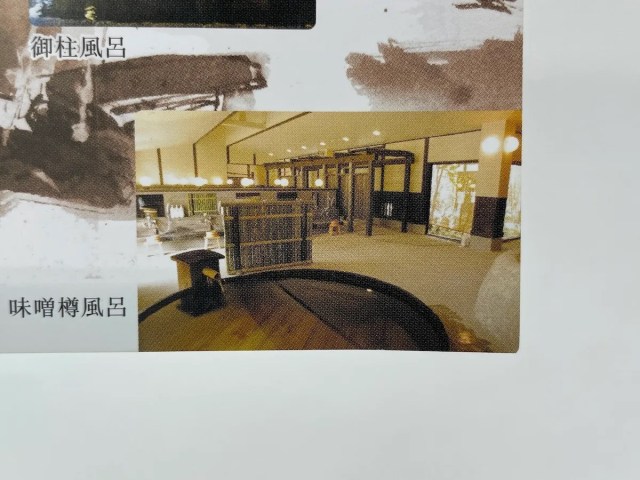
The bathroom is larger and more open-plan than the photos let on, and one surprising feature is the texture of the floor, which isn’t completely flat but rough and undulating, like a sandy shore. The surface feels great on your feet, as if it’s stimulating all the right pressure points, and with the wood and reed features, it gives the place a prehistoric jomon-like vibe.
There are plenty of washing stations and a variety of baths, as well as a dry sauna, which feels invigorating when followed by a plunge in the cold water tub. However, the most impressive baths, in our opinion, were the large indoor one with a huge wooden pillar and windows…
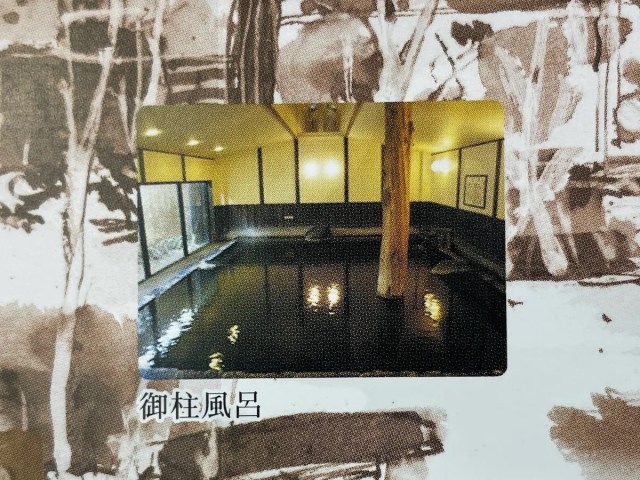
▼ …and the open-air outdoor bath, which is surrounded by trees, making it feel like a secret hot spring in the middle of a forest.
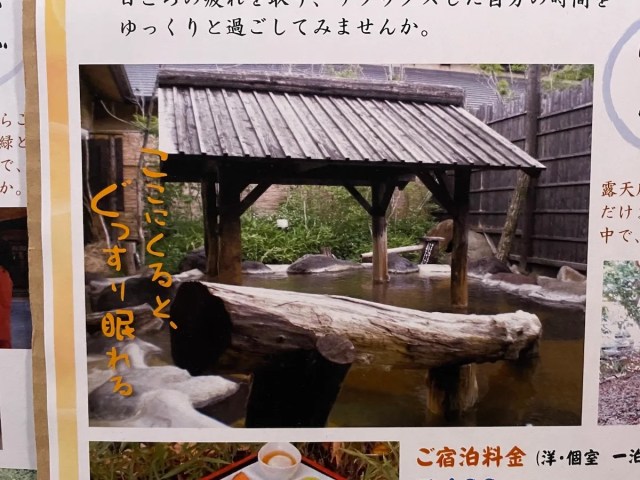
The quietness of the outdoors, combined with the sound and scenery of the hot springs, is truly soothing. The bottom of the outside bath contains rugged rocks, creating an uneven surface that takes you back to the prehistoric age, and the water is “fossil seawater“, an ancient seawater trapped 1,300 metres (4,265 feet) underground, which has a high salt concentration that warms the core of your body and leaves your skin feeling soft and smooth.
The air seems somehow crisper here, and you’ll forget that you’re actually in a busy city. After a good, long soak, you’ll feel so relaxed that the only thought on your mind will be tumbling into bed for sleep.
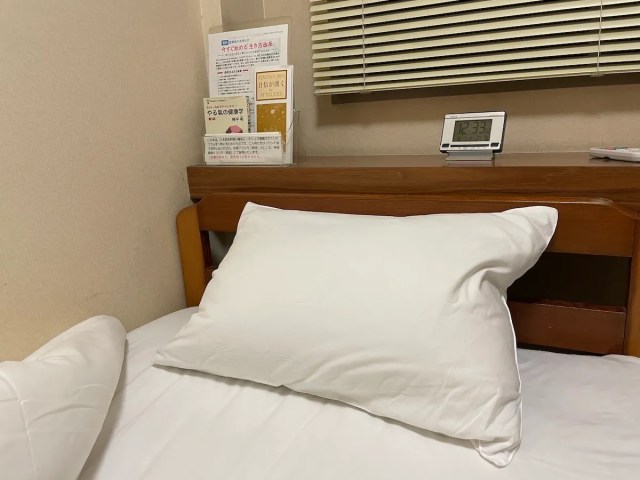
The bed was super comfy, offering a good night’s sleep, and the next day we treated ourselves to another luxurious soak in the open-air bath when it opened at 8:00 a.m.
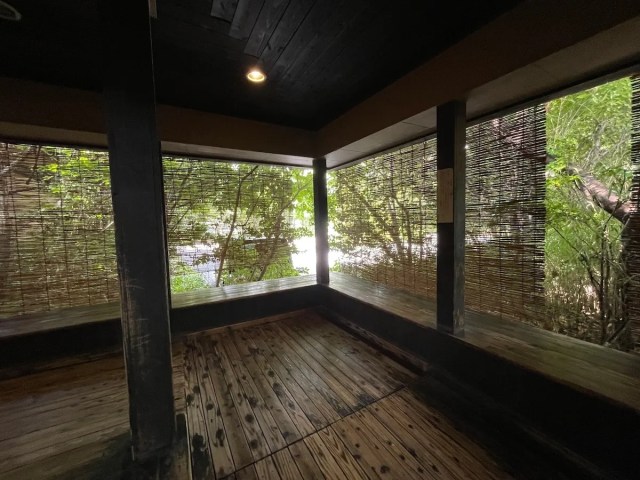
With checkout at 11:00 a.m., there’s plenty of time to enjoy the baths before heading back out into the real world again. It’s honestly surprising that such a hideaway exists less than an hour out of Tokyo, and while it can easily be visited on a day trip, an overnight stay is worth it as you get to enjoy the baths outside of regular business hours, late at night and early in the morning.
So next time you’re searching for a secret hot spring that’s not on a World Heritage-listed island in the middle of nowhere, you might want to keep this place in mind. It’s one of a number of unusual accommodation finds hiding in the city.
Site information
Jomon Natural Hot Spring Shiraku no Yu / Kawasaki Lifelong Training Centre
Address: Kanagawa-ken, Kawaski-shi, Saiwai-ku, Tsukagoe 4-314-1
神奈川県川崎市幸区塚越4-314-1
Website (hot spring)
Website (acommodation)
Related: Rakuten Travel
Photos ©SoraNews24
● Want to hear about SoraNews24’s latest articles as soon as they’re published? Follow us on Facebook and Twitter!
Credit:

0 comments: